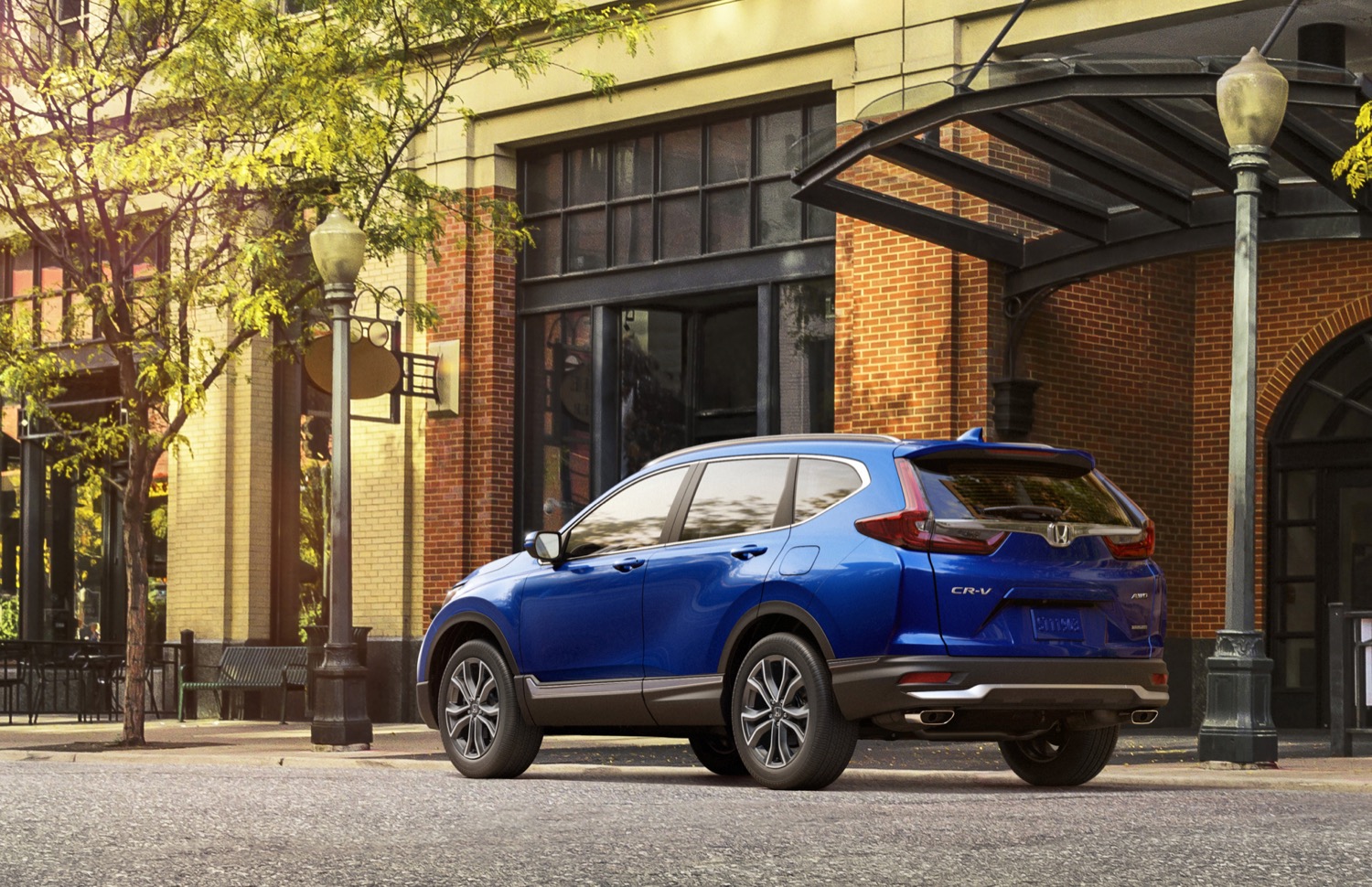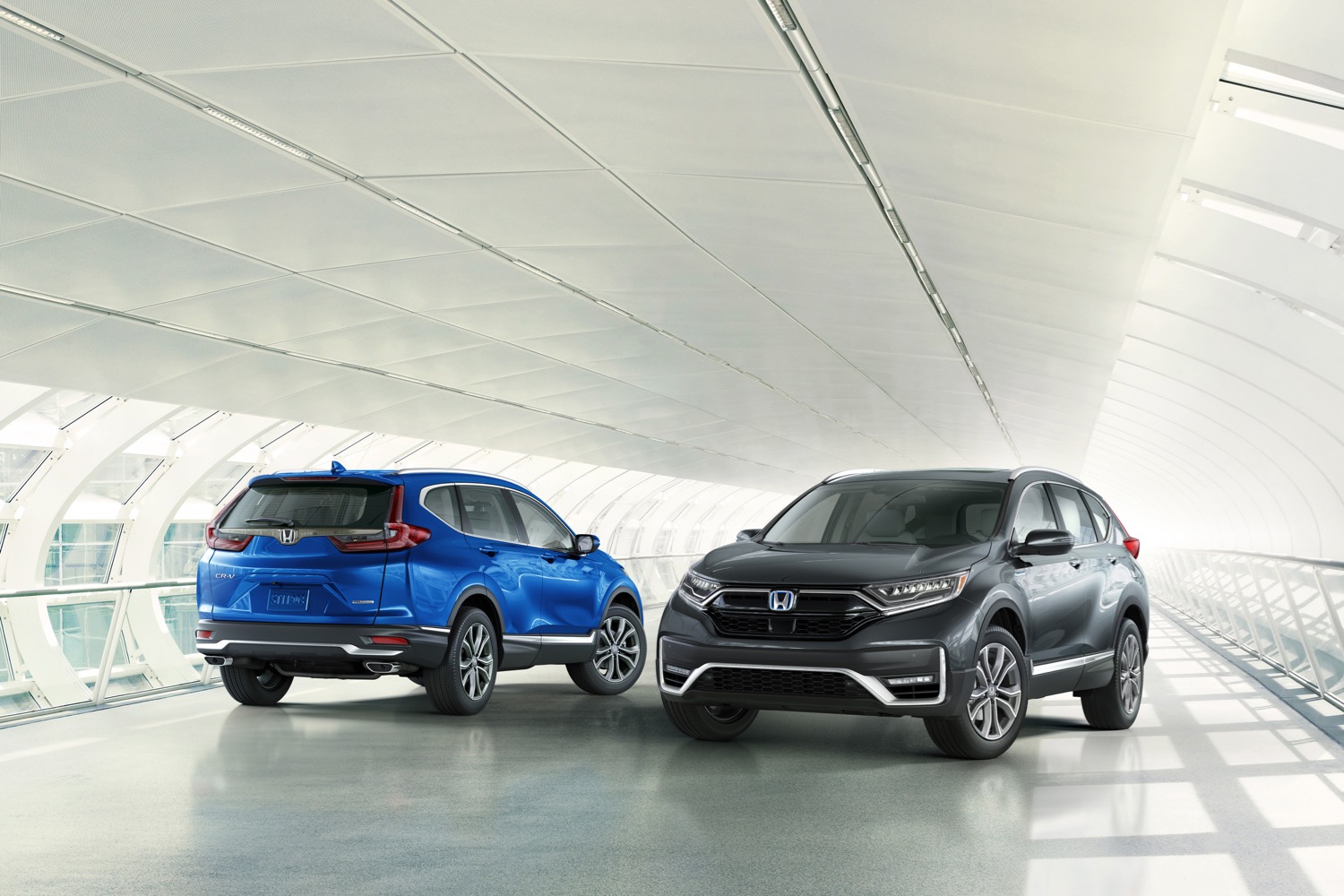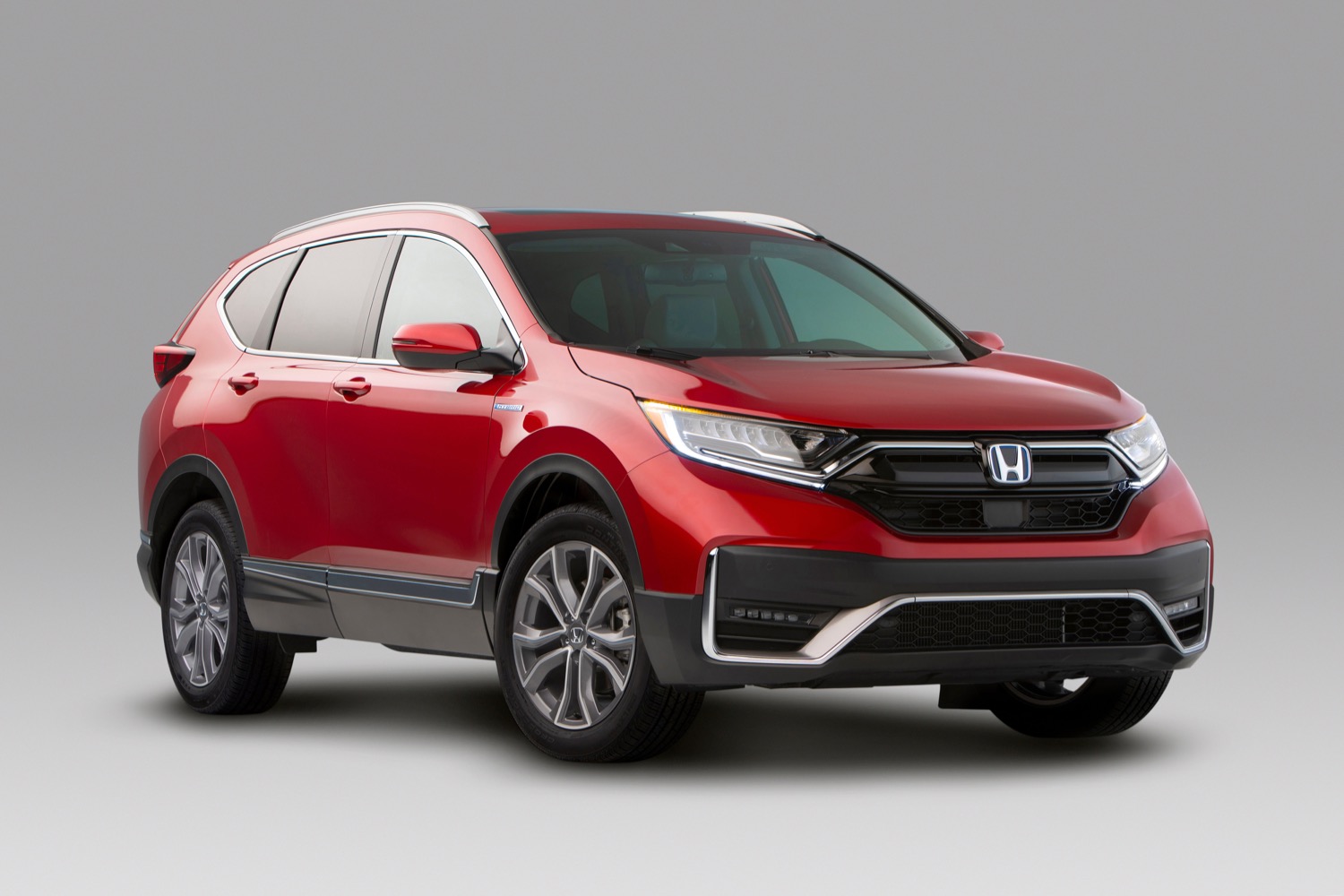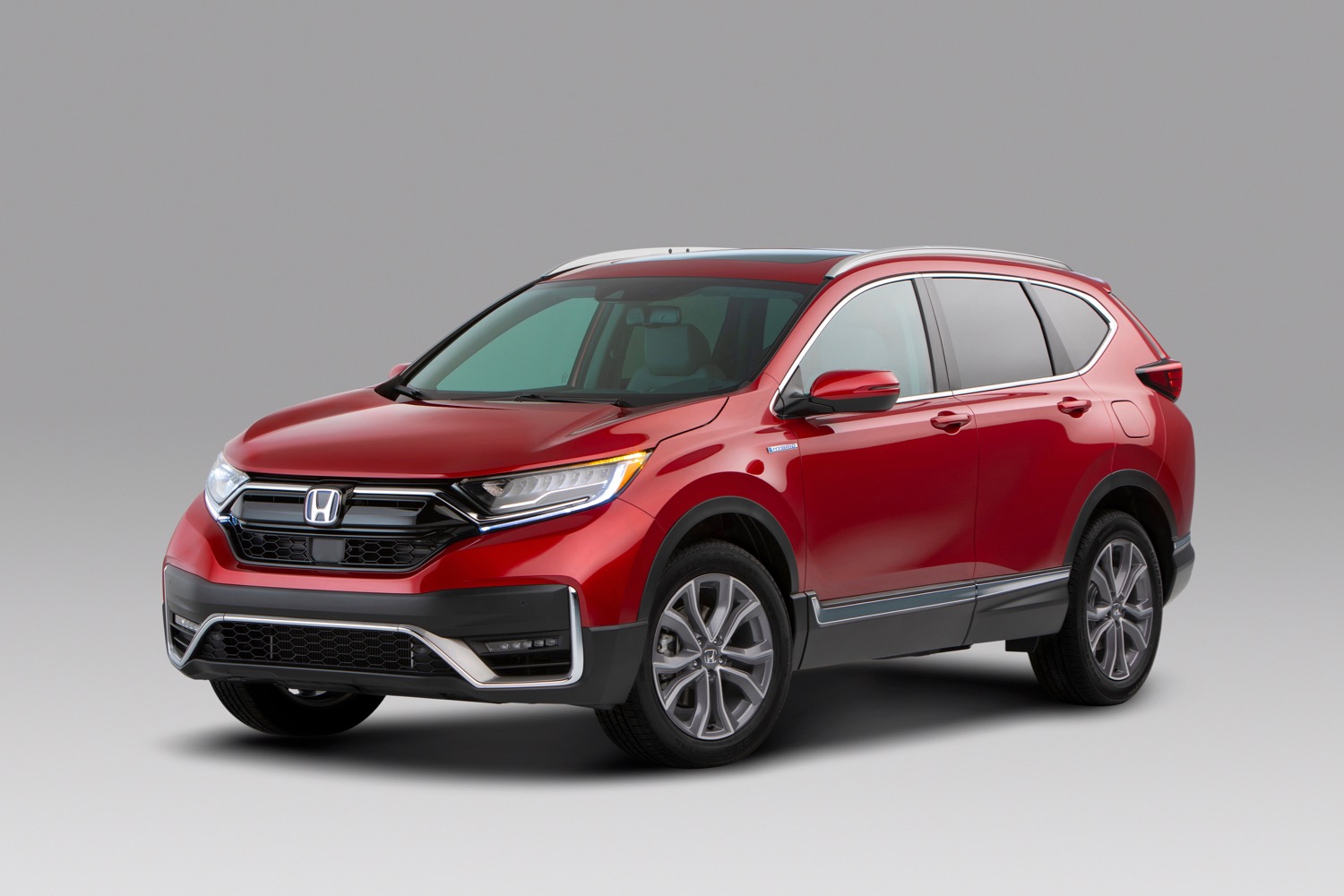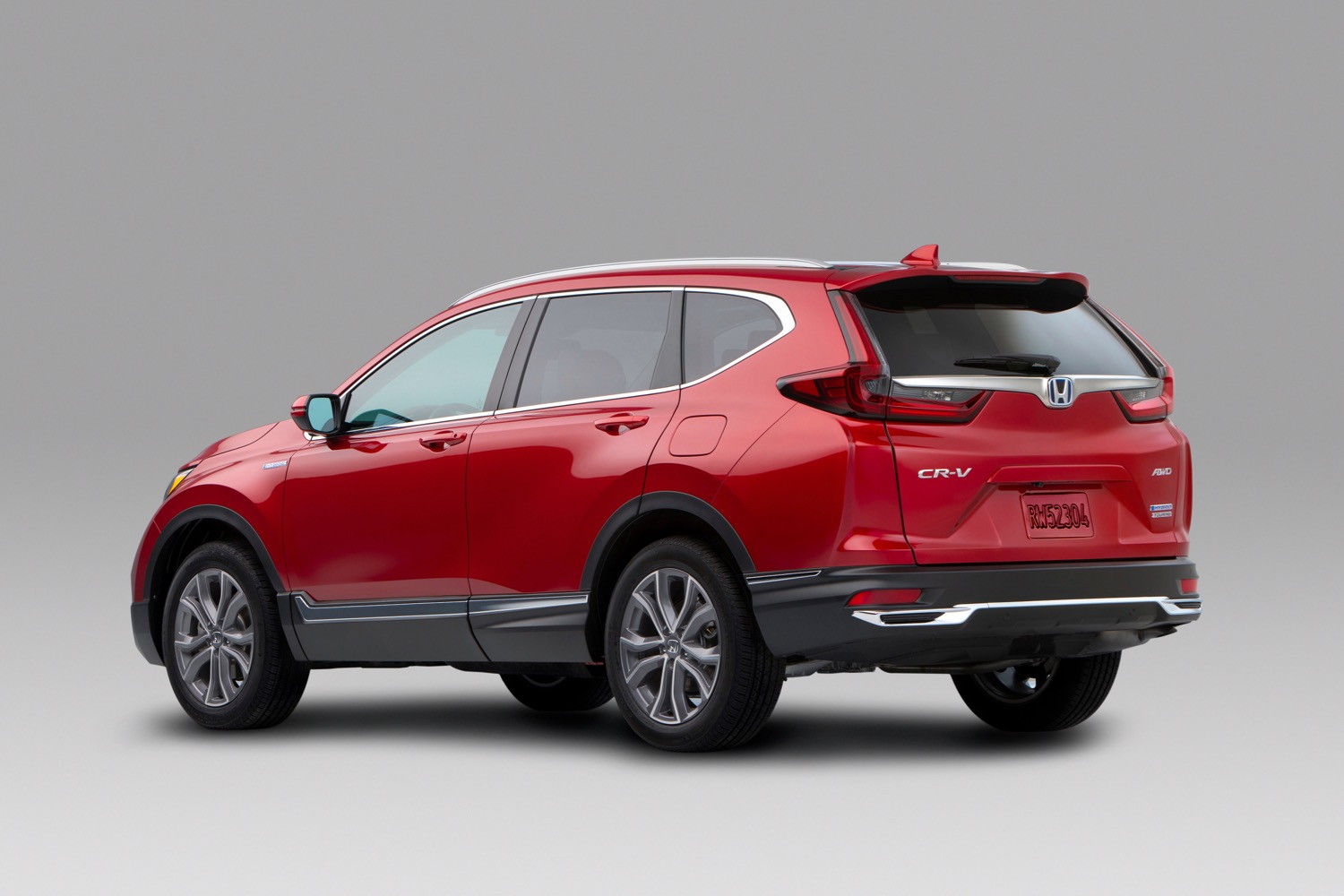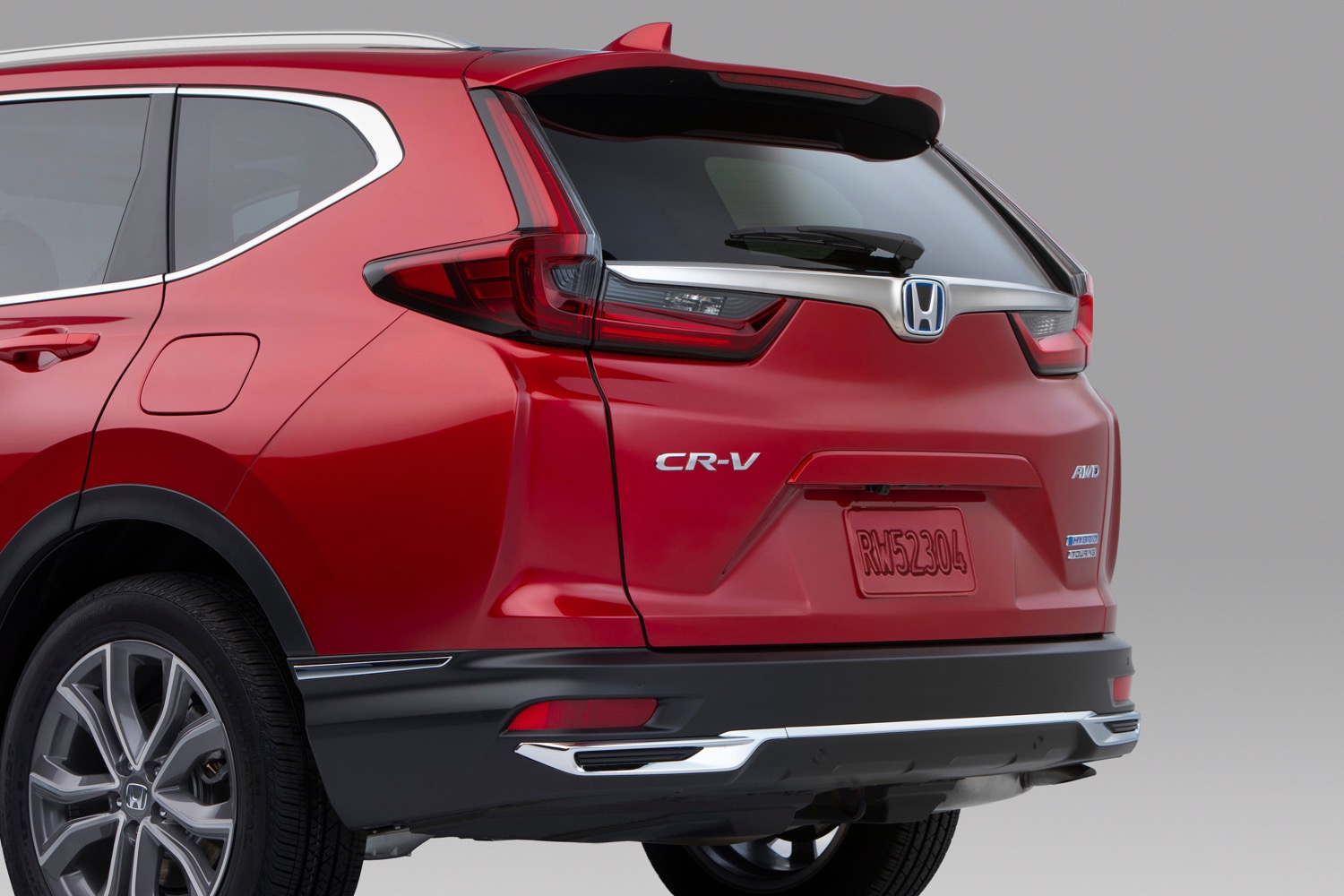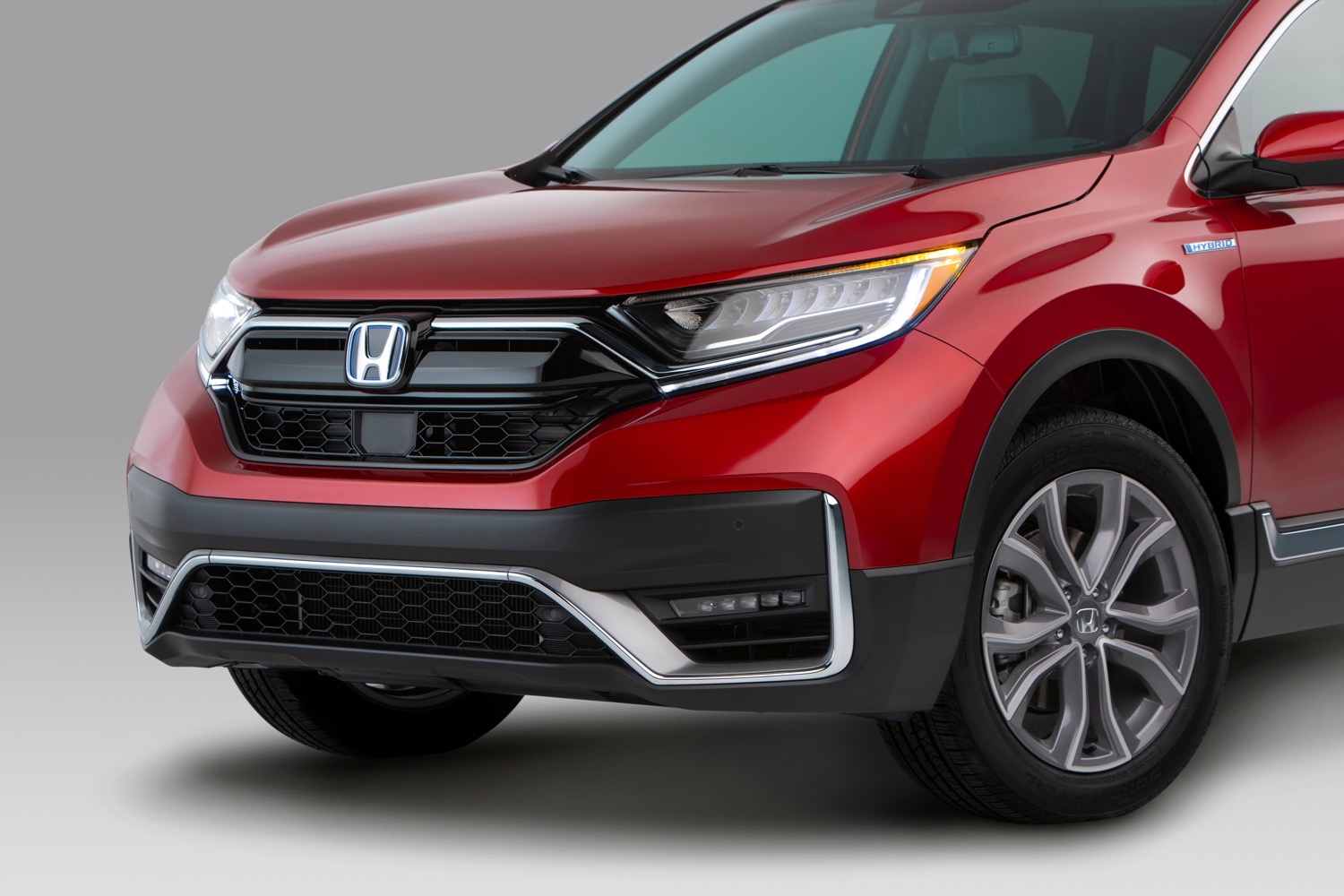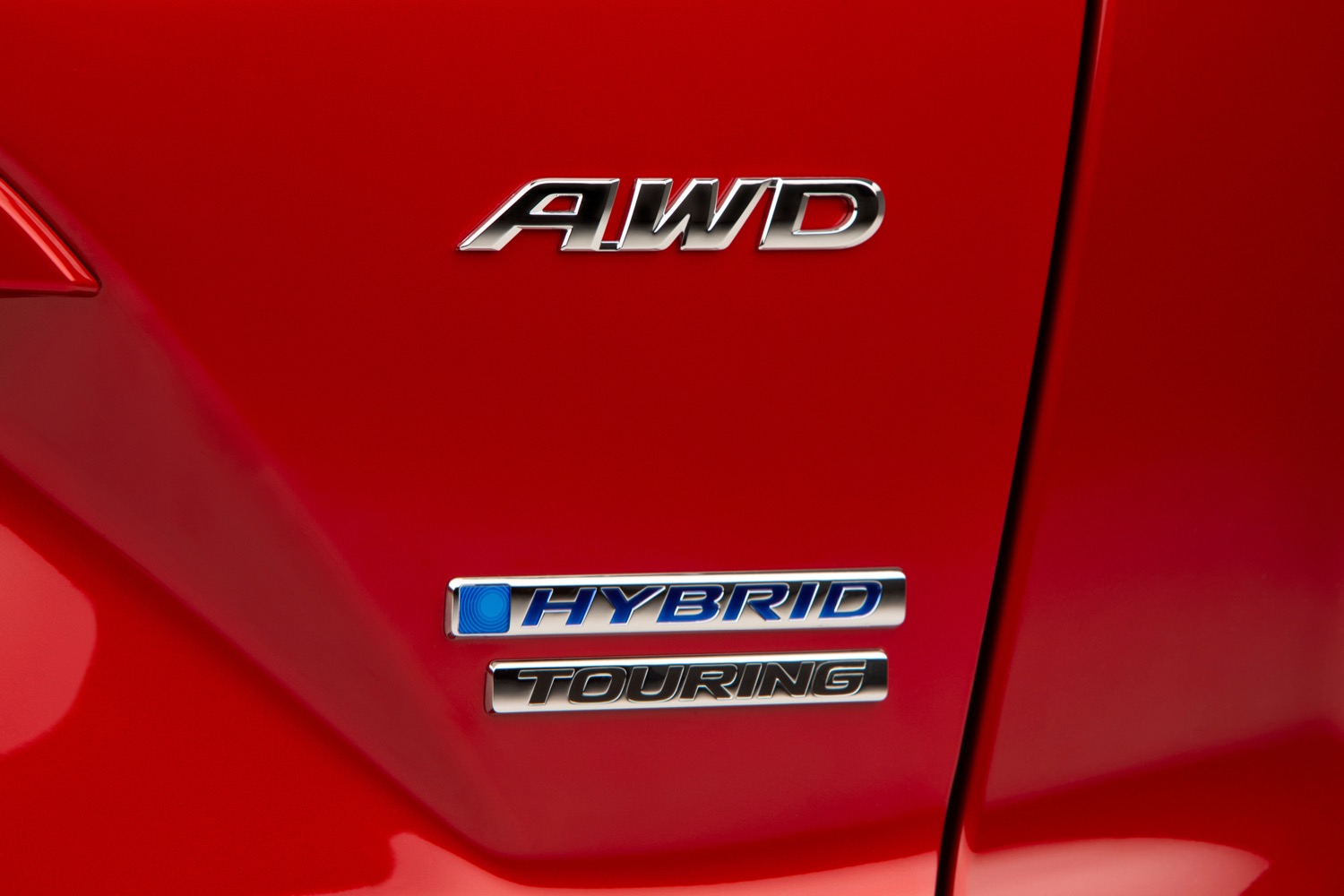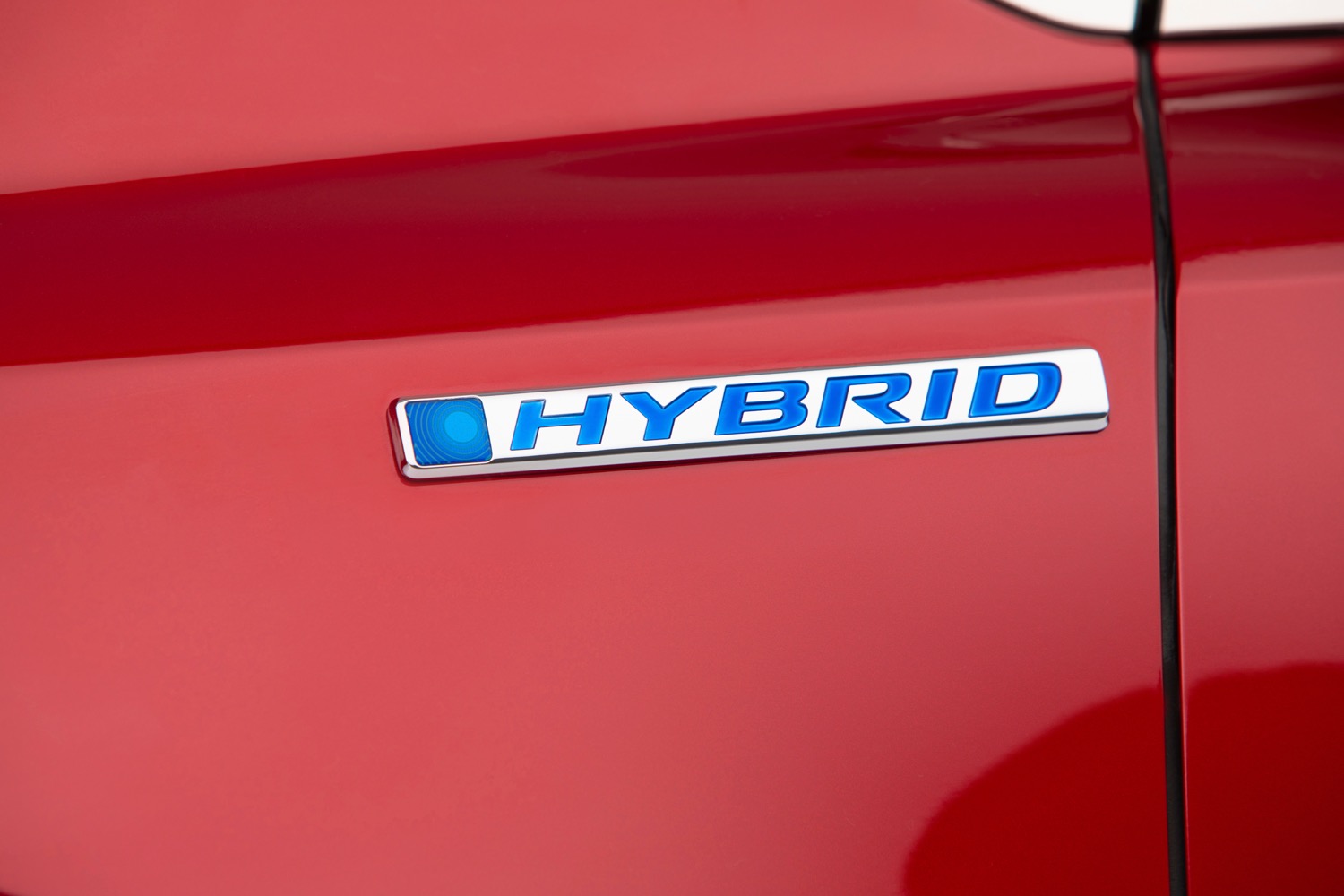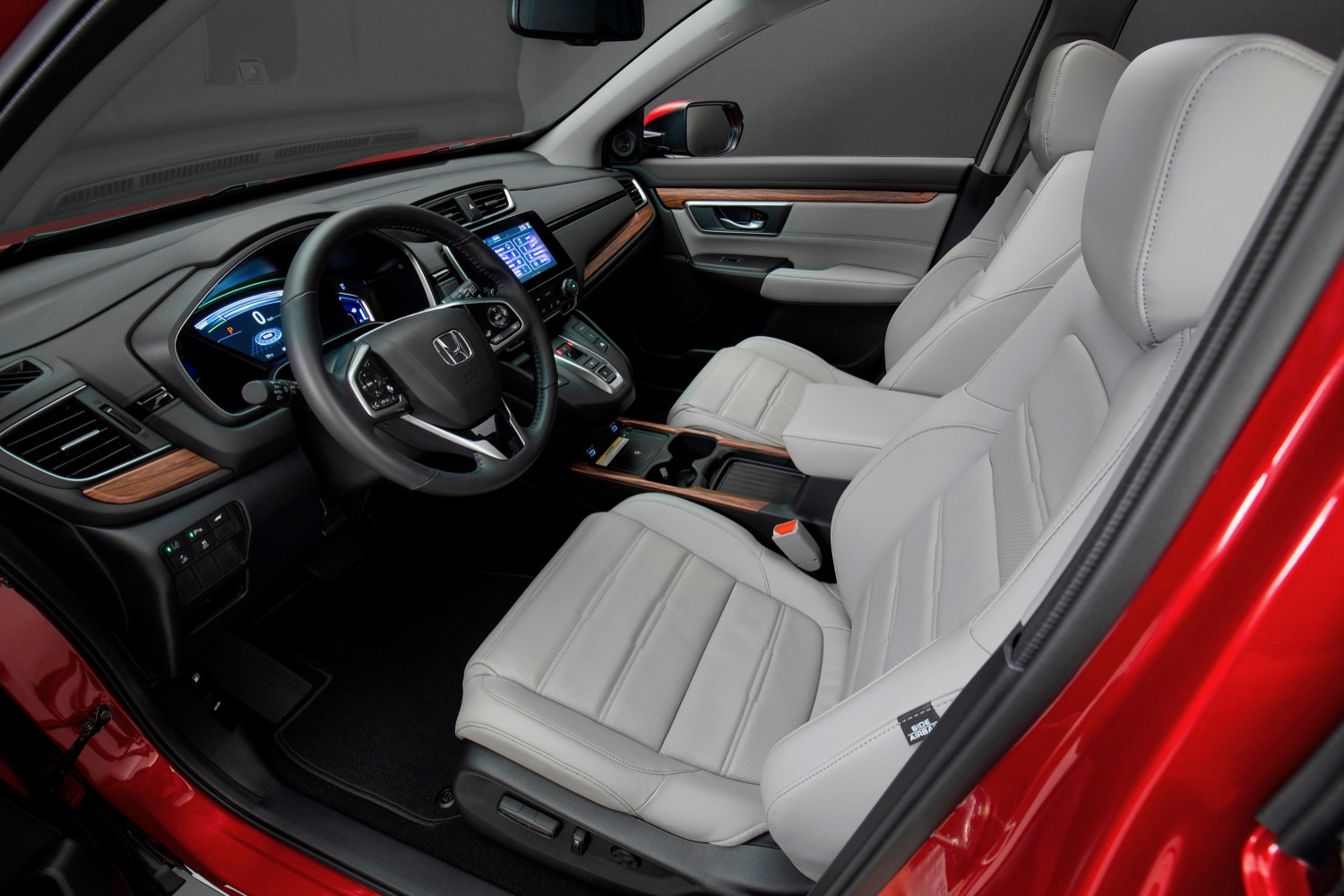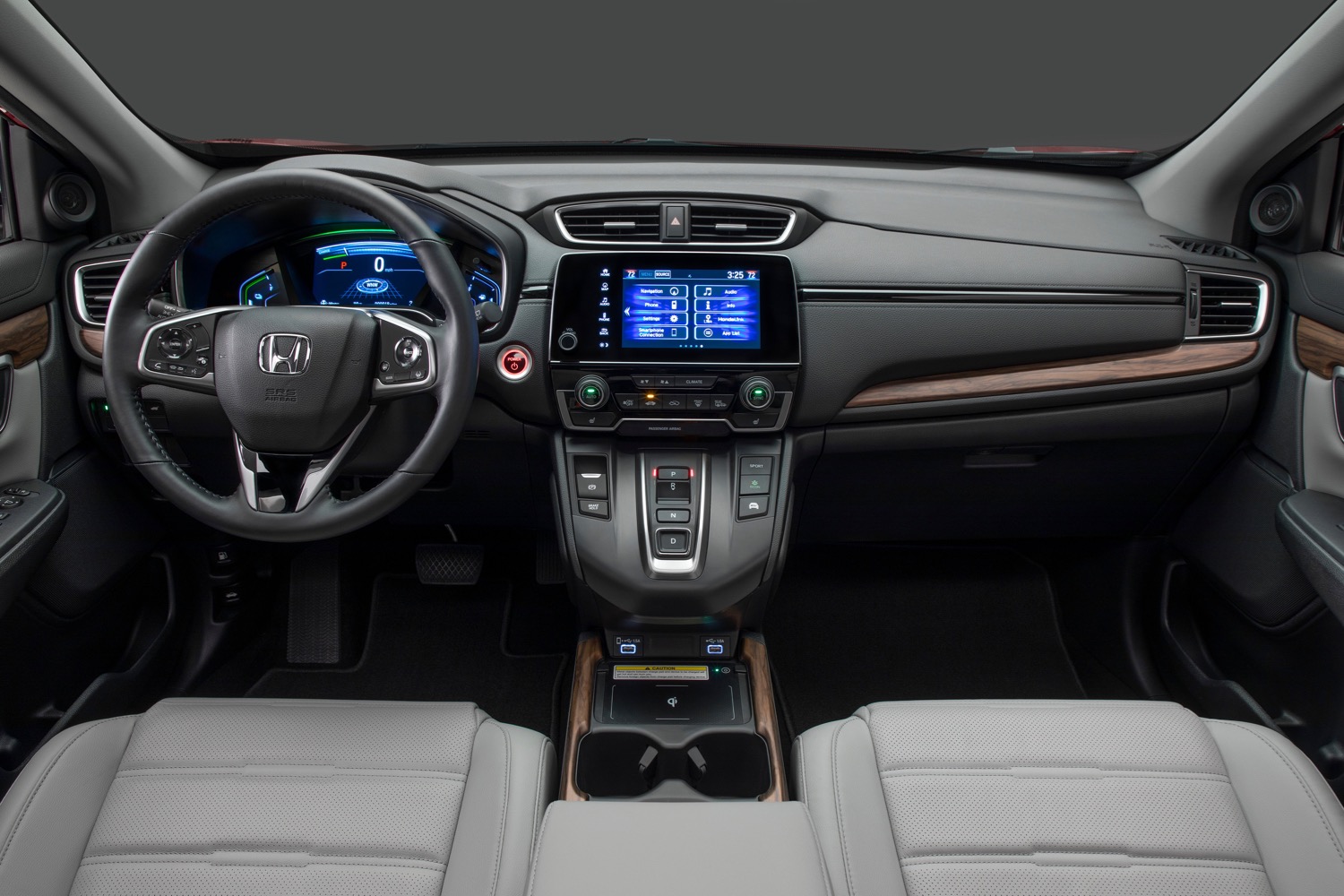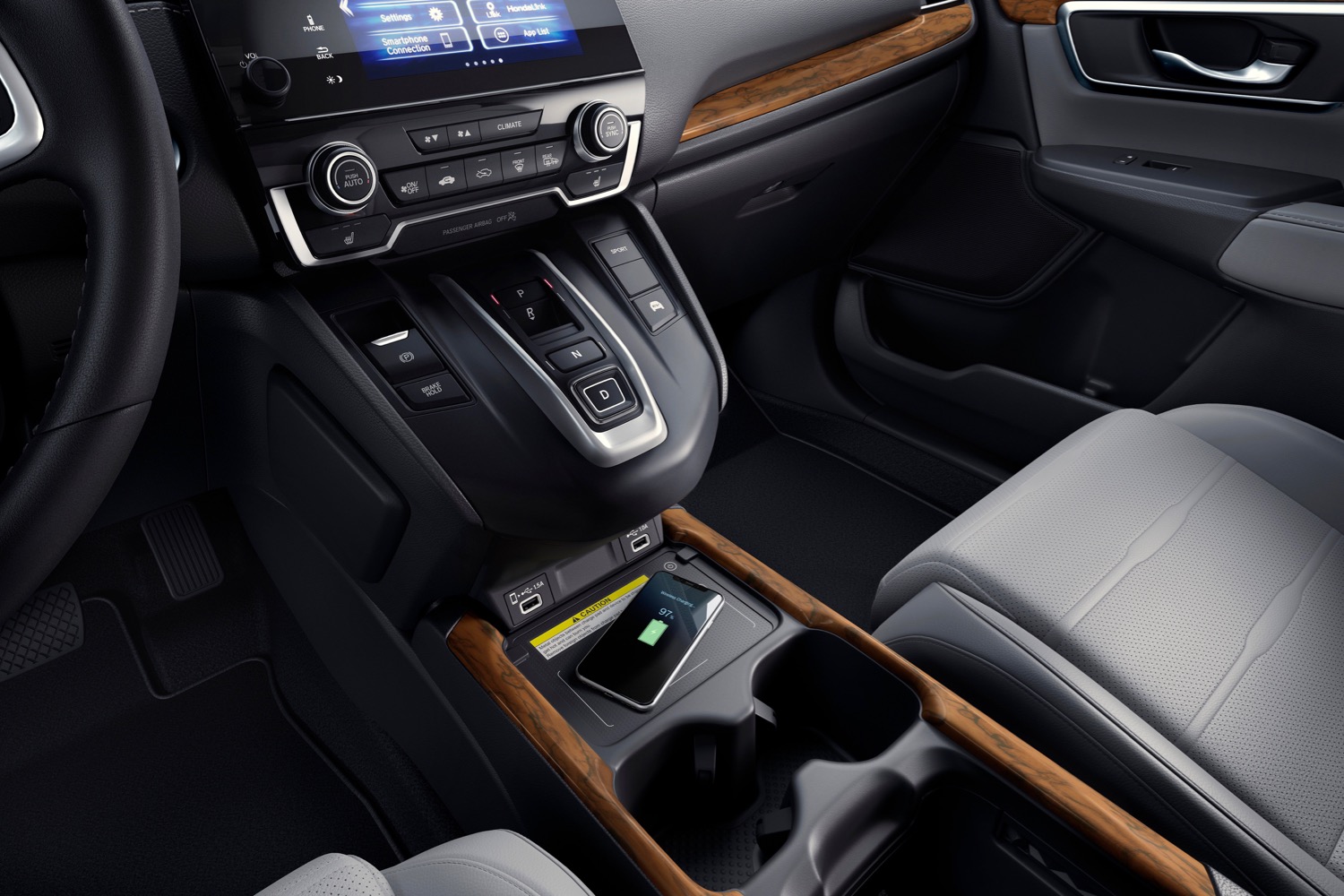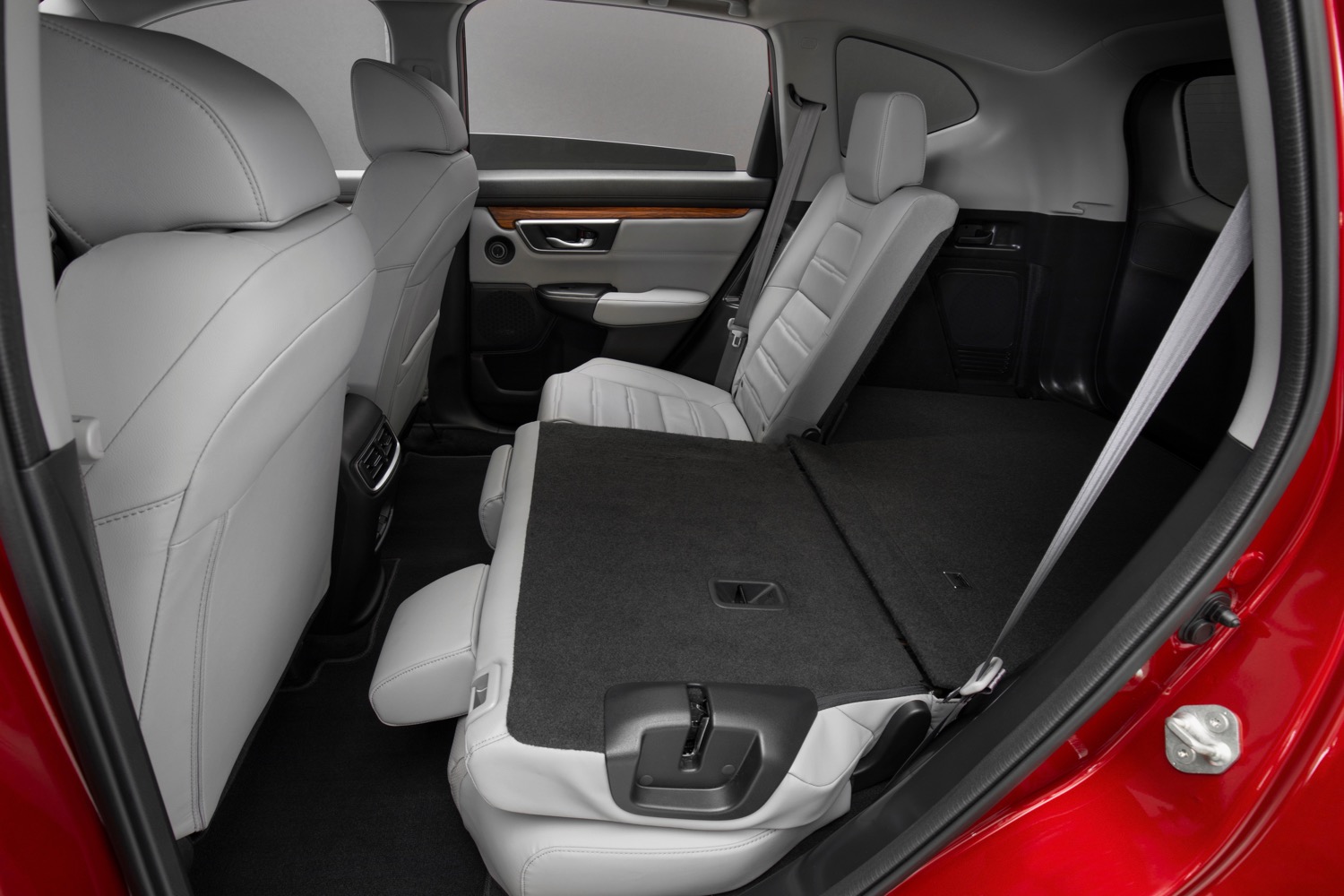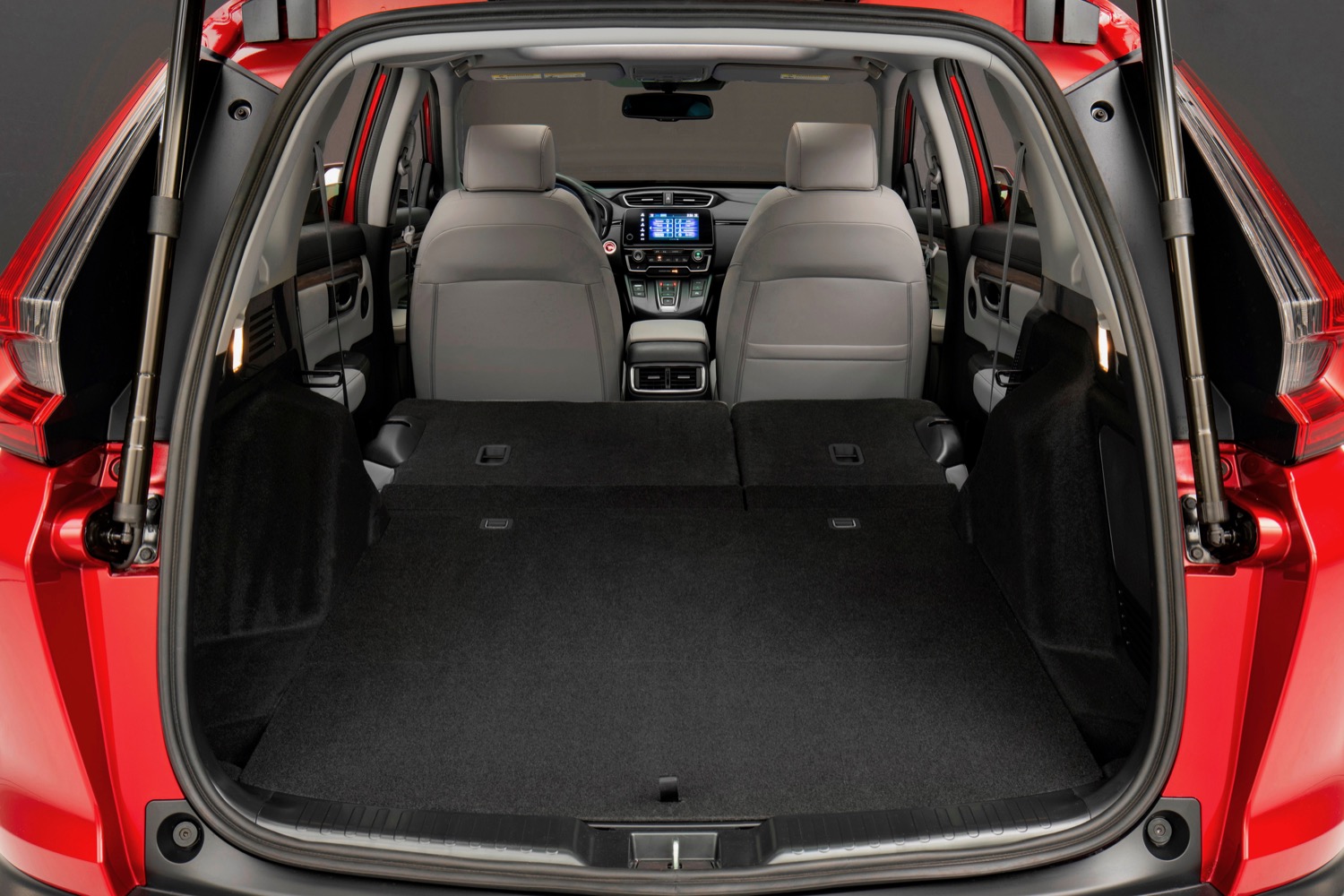Launched in 1997, the Honda CR-V was one of the original small crossovers. But that doesn’t mean Honda can rest on its laurels. With competitors adding hybrid powertrains to their crossovers, Honda is doing the same for the 2020 model year. In addition to the headline hybrid powertrain, the 2020 Honda CR-V gets revised styling and a handful of other tweaks.
The CR-V uses a similar hybrid system to the Honda Accord Hybrid. A 2.0-liter Atkinson-cycle four-cylinder engine works with two electric motors, which take the place of a conventional transmission. A clutch allows electric power to be sent to the rear wheels when needed, giving the CR-V hybrid all-wheel drive. Total system output is 212 horsepower. Honda doesn’t have final EPA fuel-economy ratings yet, but expects the hybrid to achieve a 50% improvement in gas mileage over a conventional CR-V.
Honda will have to beat the 40 mpg combined rating of the Toyota RAV4 Hybrid, at least. The 2020 Ford Escape gets a hybrid powertrain option as well, but fuel-economy ratings aren’t available yet. The Nissan Rogue Hybrid was recently discontinued due to poor sales, and could only achieve 33 mpg combined with all-wheel drive, at any rate.
For 2020, all non-hybrid CR-V models get Honda’s 1.5-liter turbocharged four-cylinder engine. Previously available only on EX and higher trim levels, it makes 190 horsepower and is coupled to a continuously variable transmission (CVT). As before, front-wheel drive is standard, with all-wheel drive optional.
The 2020 CR-V gets updated exterior styling, including a more pronounced grille. On the inside, the hybrid model has a push-button gear selector (similar to the Honda Insight hybrid) instead of a conventional shift lever, as well as steering-wheel paddles that allow the driver to control the level of regenerative braking. All CR-V models get a redesigned center console bin, while Qi wireless phone charging is available on the top Touring trim level. The CR-V also gets a 7-inch touchscreen with Apple CarPlay and Android Auto, similar to other Honda models.
The CR-V also comes standard with the Honda Sensing bundle of driver aids, including autonomous emergency braking, lane departure warning, adaptive cruise control, and lane-keep assist. Blind-spot monitoring, rear cross-traffic alert, and automatic high beams are optional extras.
Pricing for the 2020 Honda CR-V starts at $26,145 for a base LX model with front-wheel drive, and rises to $35,845 for a range-topping Touring model with all-wheel drive. Pricing and gas mileage figures for the hybrid model will be revealed closer to its launch. The non-hybrid 2020 CR-V hits showrooms November 5, while the hybrid will debut in early 2020.
Updated on November 4, 2019: Added pricing information for non-hybrid model.
Editors' Recommendations
- Honda HR-V vs. Honda CR-V
- 2020 Honda CR-V Hybrid offers 38 mpg combined for $28,870
- Honda’s new hybrid Fit is here, but will it jazz up the firm’s American range?
- Leaked documents claim the Honda Ridgeline is about to go hybrid
- IndyCar will start using 900-horsepower hybrid powertrains in 2022

